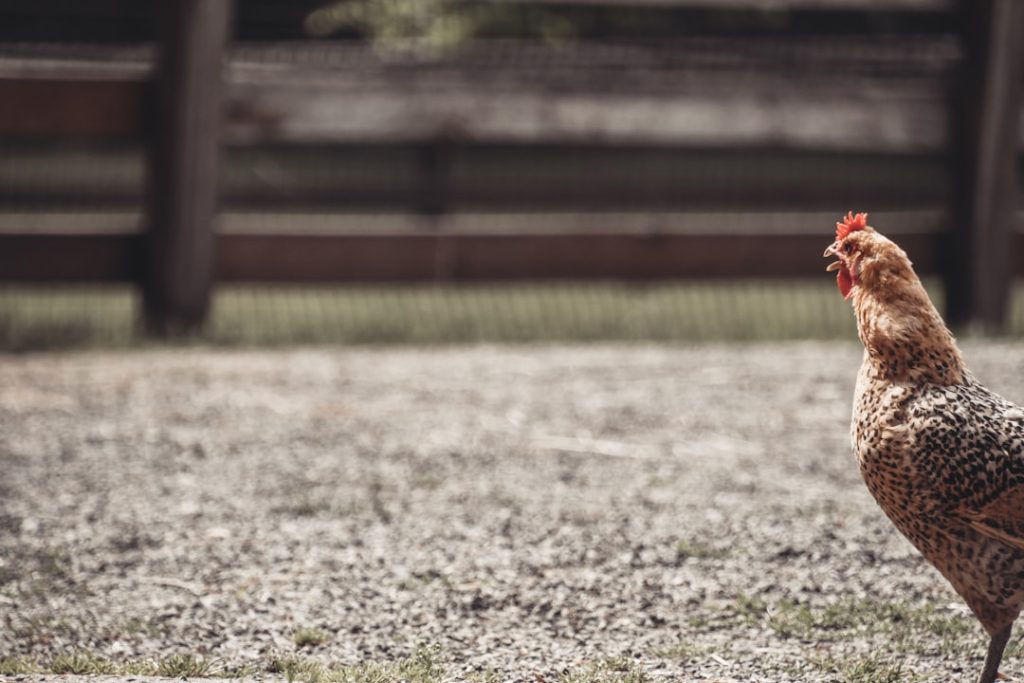Introducing new chickens to an established flock requires careful planning and execution. This process can be challenging for both the newcomers and the existing birds, necessitating a patient and informed approach. Several factors influence successful integration, including the age of the chickens, flock size, and available space.
A recommended timeline for keeping new chickens separate from the existing flock varies depending on these factors but typically ranges from a few days to several weeks. Observing signs of readiness for integration, such as reduced aggression and increased curiosity between the groups, is crucial. Implementing strategies like gradual introductions and providing adequate space and resources can facilitate a smoother transition.
Common mistakes to avoid include rushing the process or neglecting to monitor the birds closely during integration. By understanding and addressing these aspects, chicken keepers can minimize stress and potential conflicts, ultimately promoting a harmonious flock environment.
Table of Contents
- 1 Factors to Consider Before Introducing New Chickens
- 2 Recommended Timeline for Keeping New Chickens Apart
- 3 Signs that New Chickens are Ready to be Integrated
- 4 Tips for Smooth Integration of New Chickens
- 5 Common Mistakes to Avoid when Introducing New Chickens
- 6 Conclusion and Final Thoughts on Keeping New Chickens Apart
- 7 FAQs
- 7.1 What is the recommended time to keep new chickens apart?
- 7.2 Why is it important to keep new chickens apart for a certain period of time?
- 7.3 What are the potential risks of not keeping new chickens apart for a certain period of time?
- 7.4 How should new chickens be housed during the separation period?
- 7.5 What signs indicate that new chickens are ready to be integrated with the existing flock?
Key Takeaways
- Introducing new chickens to an existing flock can be a delicate process that requires careful planning and consideration.
- Factors to consider before introducing new chickens include the age, size, and health of the existing flock, as well as the space and resources available in the coop and run.
- It is recommended to keep new chickens apart from the existing flock for at least 30 days to prevent the spread of diseases and allow the new chickens to acclimate to their new environment.
- Signs that new chickens are ready to be integrated include observing calm and non-aggressive behavior, as well as similar size and age to the existing flock.
- Tips for smooth integration of new chickens include providing multiple feeding and watering stations, gradually introducing the new chickens to the existing flock, and monitoring their interactions closely.
- Common mistakes to avoid when introducing new chickens include rushing the integration process, overcrowding the coop, and not providing enough hiding spots and perches for the new chickens.
- In conclusion, introducing new chickens to an existing flock requires patience, careful observation, and proactive management to ensure a successful integration process.
Factors to Consider Before Introducing New Chickens
Health Assessment and Quarantine
It is essential to assess the health of both the new chickens and the existing flock. Quarantining new chickens for a period of time before introducing them to the existing flock can help prevent the spread of any potential diseases or parasites.
Age, Size, and Temperament Considerations
The age and size of the new chickens in relation to the existing flock must be considered. Young chicks may be more vulnerable to aggression from older birds, so it is important to provide a safe and separate space for them until they are old enough to defend themselves. The temperament of the existing flock is also crucial, as some chickens may be more territorial or aggressive than others.
Space and Resource Management
Finally, it is vital to consider the space available in your coop and run. Overcrowding can lead to increased stress and aggression among chickens, so it is essential to ensure that there is enough space for all birds to establish their own territories and hierarchies.
Recommended Timeline for Keeping New Chickens Apart

Once you have considered the factors mentioned above, it is important to establish a recommended timeline for keeping new chickens apart from the existing flock. The length of time will depend on several factors, including the age and health of the new chickens, the temperament of the existing flock, and the available space in your coop and run. In general, it is recommended to keep new chickens separate from the existing flock for a period of 4-6 weeks.
During this time, the new chickens can be quarantined in a separate area to ensure that they are healthy and free from any potential diseases or parasites. This also allows them to acclimate to their new environment and establish their own pecking order before being introduced to the existing flock. It is important to provide the new chickens with their own food and water sources during this time, as well as plenty of space to move around and exercise.
Additionally, providing visual barriers such as wire mesh or fencing can help prevent aggressive behavior between the new chickens and the existing flock while still allowing them to see and become familiar with each other.
Signs that New Chickens are Ready to be Integrated
Once the recommended timeline for keeping new chickens apart has passed, it is important to look for signs that indicate readiness for integration. One of the most important signs is when the new chickens have reached a similar size and maturity level as the existing flock. This can help minimize potential aggression from older birds towards younger or smaller ones.
Additionally, if the new chickens have been able to establish their own pecking order and are showing confidence in their new environment, they may be ready for integration. It is also important to observe the behavior of both the new chickens and the existing flock. If they are showing curiosity towards each other without displaying aggressive behavior, this can be a positive sign that they are ready to be introduced.
It is important to be patient and observant during this process, as rushing the integration can lead to stress and potential conflicts among the birds.
Tips for Smooth Integration of New Chickens
When it comes time to integrate new chickens with an existing flock, there are several tips that can help ensure a smooth transition for all birds involved. One important tip is to introduce the new chickens to the existing flock during the evening when they are roosting. This can help minimize potential aggression as they wake up together in the morning and can establish their own territories and hierarchies during daylight hours.
It is also important to provide multiple food and water sources in different areas of the coop and run to prevent competition and aggression over these resources. Additionally, providing plenty of space and hiding spots such as bushes or structures can help minimize potential conflicts among the birds. It is also important to monitor their behavior closely during the integration process and be prepared to separate them if necessary.
Common Mistakes to Avoid when Introducing New Chickens

Avoid Rushing the Integration Process
When introducing new chickens to an existing flock, it’s essential to avoid rushing the integration process. This can lead to stress and potential conflicts among the birds. Instead, be patient and observant, taking the time to ensure a smooth transition for all birds involved.
Providing Adequate Space and Hiding Spots
Another common mistake is not providing enough space or hiding spots for the birds to establish their own territories and hierarchies. Overcrowding can lead to increased stress and aggression among chickens, so it’s crucial to ensure that there is enough space for all birds to move around freely.
Monitoring Behavior Closely
It’s also important not to neglect monitoring their behavior closely during the integration process. This will enable you to be prepared to separate them if necessary, should any conflicts arise. By being vigilant and proactive, you can minimize the risk of stress and aggression among your flock.
Conclusion and Final Thoughts on Keeping New Chickens Apart
In conclusion, introducing new chickens to an existing flock can be a delicate process that requires careful planning and consideration. By taking into account factors such as health, age, temperament, and space, establishing a recommended timeline for keeping new chickens apart, looking for signs that indicate readiness for integration, following tips for smooth integration, and avoiding common mistakes, you can help ensure a smooth transition for all birds involved. It is important to approach this process with patience and a clear understanding of the potential challenges that may arise.
By doing so, you can help minimize stress and potential conflicts among your feathered friends while creating a harmonious environment for your entire flock.
If you’re considering getting new chickens and wondering how long to keep them apart, you may want to check out this article on Producers Pride Sentinel Chicken Coop. This article provides valuable information on coop options for new chickens and how to keep them safe and comfortable as they adjust to their new environment. It’s important to give new chickens time to acclimate before introducing them to the rest of the flock, and the right coop can make all the difference.
FAQs
What is the recommended time to keep new chickens apart?
The recommended time to keep new chickens apart is typically 2-4 weeks. This allows the new chickens to acclimate to their new environment and reduces the risk of spreading diseases.
Why is it important to keep new chickens apart for a certain period of time?
Keeping new chickens apart for a certain period of time helps to prevent the spread of diseases and allows the new chickens to establish a pecking order without being overwhelmed by the existing flock.
What are the potential risks of not keeping new chickens apart for a certain period of time?
Not keeping new chickens apart for a certain period of time can lead to stress, aggression, and the spread of diseases within the flock. It can also disrupt the social dynamics of the existing flock.
How should new chickens be housed during the separation period?
New chickens should be housed in a separate coop or enclosure that is located within the same general area as the existing flock. This allows the chickens to see and hear each other, but prevents direct contact.
What signs indicate that new chickens are ready to be integrated with the existing flock?
Signs that new chickens are ready to be integrated with the existing flock include reduced aggression towards each other, no signs of illness, and a willingness to interact with the existing flock through the enclosure.
Meet Walter, the feathered-friend fanatic of Florida! Nestled in the sunshine state, Walter struts through life with his feathered companions, clucking his way to happiness. With a coop that’s fancier than a five-star hotel, he’s the Don Juan of the chicken world. When he’s not teaching his hens to do the cha-cha, you’ll find him in a heated debate with his prized rooster, Sir Clucks-a-Lot. Walter’s poultry passion is no yolk; he’s the sunny-side-up guy you never knew you needed in your flock of friends!







